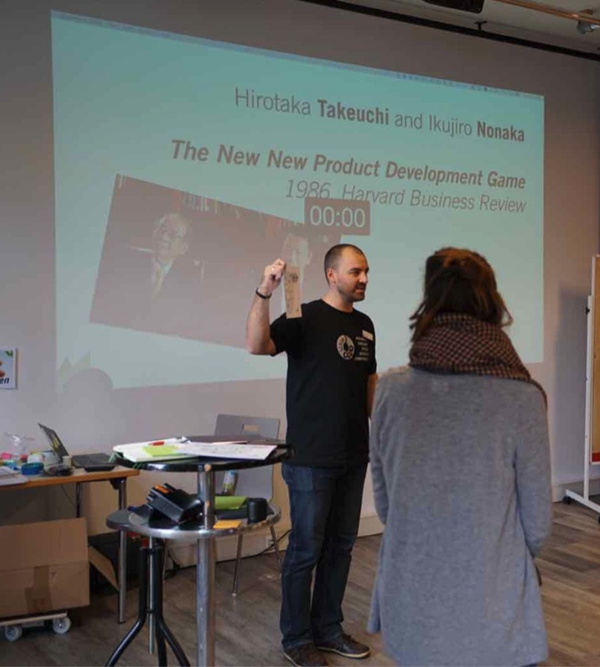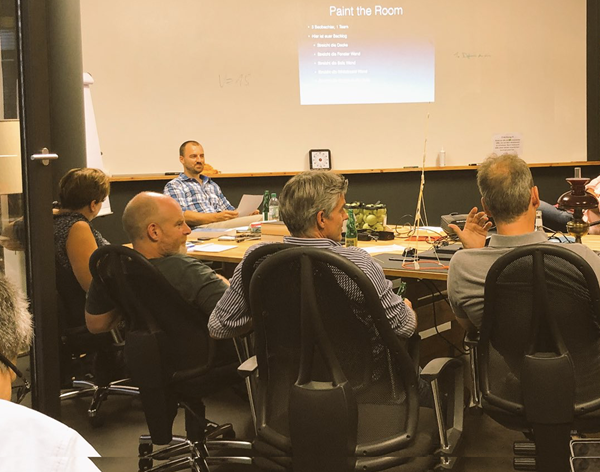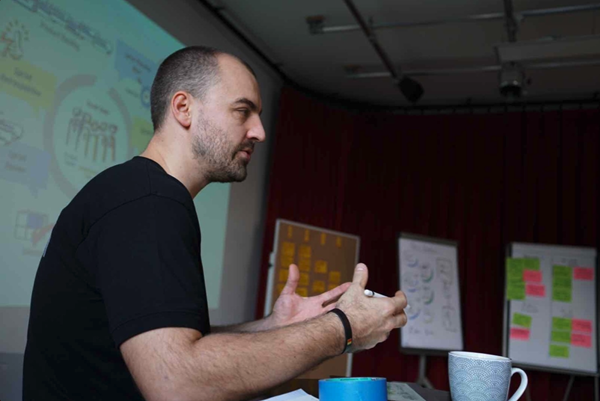Learn about purchasing for teams
How Scrum Alliance Influenced My Agile Career

Five years ago, I had just changed jobs and one of my new colleagues noticed I had a Certified ScrumMaster® (CSM) Certification from Scrum Alliance. He asked me if I would advise him on how to go to a CSM course as well. Back then, my answer sounded like “it’s more important to practice Scrum and experiment a lot. I don’t think you need a training. I could have gotten where I am without it.” I could not have been more wrong.
Today, I am on my way to becoming a Certified Scrum Trainer (CST), and as you might guess, my perception has changed quite a bit since then. I took some time to reflect on my agile journey and I came to the conclusion that even my job change five years ago would not have happened without my Scrum Alliance Certification.
So, where did it all start?
At the end of 2011 I became an interim Product Owner (PO) for one of our clients. I was a young consultant and had read one book about Scrum. I liked what I saw, and it seemed like something I had been looking for. I wasn’t comfortable with classic waterfall projects that I had worked on before.
So, there I was, the PO of a team. Soon I noticed that there was this other role, the Scrum Master, that seemed quite appealing. It was something I wanted to try after my interim PO gig was done. I decided to ask for some training and my boss sent me to Munich, where I did a CSM course in January 2012. I had arrived at the top of the Dunning-Kruger Curve (the less you know, the more you think you know). I thought I knew it all.
Over the next three years I changed jobs once (having a CSM was a huge plus according to the headhunter) and had the opportunity to work with multiple Scrum Teams. Though, I forgot about Scrum Alliance and the training quite quickly (looking back, this was a huge mistake). In my new role, I had the opportunity to experiment and I started to hold monthly sessions about Scrum for new employees. A first tiny step towards hosting multi-day trainings. 
One job change later, I found myself in a company where Scrum and agile were not adopted yet and I was the only active practitioner. Fortunately, I got project assignments that were in highly complex environments. So together with my client we decided to apply Scrum to tackle them.
In retrospect this is where my career took a pivotal turn. I had to train new teams on Scrum as they had never worked with it before, doing two-hour training sessions to get things started. Together with a Certified Scrum Professional (CSP) from my client, I held my first one day training. And several more would follow over the next months. This is when I noticed that doing trainings is something I really enjoy. I was looking for the next big step and started to remember my CSM training, so I looked up what I had to do in order to become a CST.
The next step was to become a CSP, which at the time was not yet a training path. I had to gather Scrum Education Units (SEUs) and write a personal statement about my Scrum journey and growth so far. To earn SEU’s, I looked for a local User Group to join and felt quite embarrassed when I noticed that there had been one in my city since the time I earned my CSM. 
I started visiting that User Group in March 2017. Here I had the chance to connect to experienced people from the German community. This still has a huge impact on my daily work. Today I am part of the team that organizes the local User Group, and one of my fellow organizers is my mentor on the path to becoming a CST.
I also decided to attend a Global Gathering to earn SEU’s. In 2017 I had my first Global Scrum Gathering experience in Dublin. It was overwhelming. The connections that happened outside of the talks are still invaluable. I met so many great and experienced agilists that still help me grow today. In November 2017 I achieved my year’s goal and became a CSP.
Over the years, I noticed that there were many misinterpretations of Scrum in most companies I worked with, internally or externally. This has changed my view on the value of certified trainings.
Looking back, I was fortunate to end up with a good setup on my first agile project. It was not perfect but much better than a lot of implementations I have seen since. This led me to the false conclusion that applying Scrum is the only thing that matters. Though before applying it, you should learn and understand what it actually is.
Today I am truly convinced that a solid baseline and high-quality education is essential to start practicing Scrum. And this is exactly what CSM and CSPO courses provide. You get to learn how Scrum works and why, and you experience it in the course itself. Each participant has the chance to at least understand and experience how it should be done once. I wanted to be part of making that happen, and attending the Global Gathering only strengthened that wish.
So I went all in and started looking for a company that already had CSTs and would be willing to hire me and help me on my journey to becoming a CST. And what can I say, this worked because of the connections I made in the local User Group. So again, Scrum Alliance played a vital part in my career path.
Renewing my credentials has never been a question for me since. The benefits of free training material for agile coaches, the reduced conference fees and the support Scrum Alliance provides to user groups are more than worth it. This is also one of the reasons I choose to stay with Scrum Alliance as I like the nonprofit and community character.
Today I am working closely with CST’s inside and outside my company on a daily basis. I am on a journey of learning and growth that never would have happened had I not gotten involved with the Scrum Alliance Community. I finally found a job that I truly enjoy and that I see a lot of purpose in. My Ikigai (“a reason for being”) so to say.
Jan Neudecker is a Certified Scrum Professional from Ludwigshafen am Rhein, Germany. His agile journey started in 2011. He can be reached at https://www.linkedin.com/in/jan-neudecker-16573717/.











